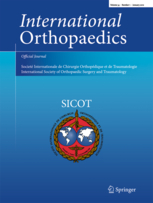
TRAUMA
Unstable intertrochanteric fracture: PFN vs reverse distal femoral locking plate
This report has been verified
by one or more authors of the
original publication.
Int Orthop. 2014 Jul;38(7):1443-9
40 patients with unstable intertrochanteric fractures with compromised lateral wall were randomized to determine a superior method of fixation between proximal femoral nail (PFN) and contralateral reverse distal femoral locking compression plate (reverse-DFLCP). Patients were monitored over 1 year and were evaluated based on intraoperative measures, clinical outcomes, and rate of mechanical failure. The evidence presented in this trial demonstrated that PFN resulted in a shorter duration of surgery, fluoroscopy time, and less blood loss. PFN patients also experienced significantly fewer failures, and demonstrated favorable clinical outcomes in the HHS and SF-12.
Unlock the full ACE Report
You have access to {0} free articles per month.Click below to unlock and view this {1}
Unlock NowCritical appraisals of the latest, high-impact randomized controlled trials and systematic reviews in orthopaedics
Access to OrthoEvidence podcast content, including collaborations with the Journal of Bone and Joint Surgery, interviews with internationally recognized surgeons, and roundtable discussions on orthopaedic news and topics
Subscription to The Pulse, a twice-weekly evidence-based newsletter designed to help you make better clinical decisions
Exclusive access to original content articles, including in-house systematic reviews, and articles on health research methods and hot orthopaedic topics
Or upgrade today and gain access to all OrthoEvidence content for just $1.99 per week.
Already have an account? Log in


Subscribe to "The Pulse"
Evidence-Based Orthopaedics direct to your inbox.
{0} of {1} free articles
Become an OrthoEvidence Premium Member. Expand your perspective with high-quality evidence.
Upgrade Now













































































